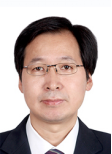
At the invitation of the Key Laboratory of Western China’s Environmental Systems (Ministry of Education), College of Earth and Environmental Sciences, Lanzhou University, Professor Fang Chuanglin from Institute of Geographic Sciences and Resources Research, Chinese Academy of Sciences came to our university for a visit and gave an academic report. Welcome!
Title: Looking for the backbone line of national development strategy: The Reflection caused by Botai line perpendicular to Hu Huanyong Line
Time: September 25th, 16:15–17:05
Site: Lecture room 502, Qilian Building, Chengguan Campus (Western District) of Lanzhou University
Lecturer profile
Fang Chuanglin, academician of Eurasian Academy of Sciences, distinguished Professor of Changjiang Scholar, Ministry of Education, distinguished Researcher of Chinese Academy of Sciences and doctoral supervisor, mainly engaged in the research and teaching of urban geography, urbanization and urban planning, etc. He has conducted in-depth research on China's urbanization process and the degree of resource and environmental protection, sustainable development of China's urban agglomerations, urbanization process and ecological environment effect, as well as urban master planning of different types and different spatial scales, detailed urban control planning and industrial agglomeration planning. He has successively presided over and completed more than 100 projects of the National Social Science Fund, the Key projects of the National Natural Science Fund, the key projects of the Science and Technology Support Program of the Ministry of Science and Technology, the National 973 Project, the 11th Five-Year Plan and 12th Five-year Plan of the National Development and Reform Commission, and the 12th Five-year Plan of the Ministry of Environmental Protection, etc. He has edited and published more than 20 academic works and more than 330 academic papers, including 40 SCI/SSCI papers, 20 EI papers, 20 authorized software Copyrights and 9 invention patents.